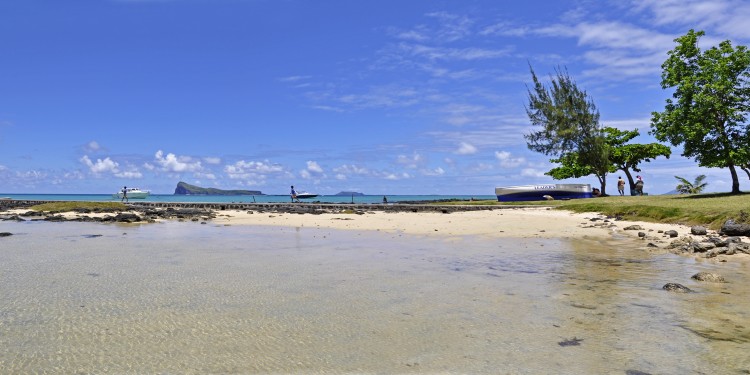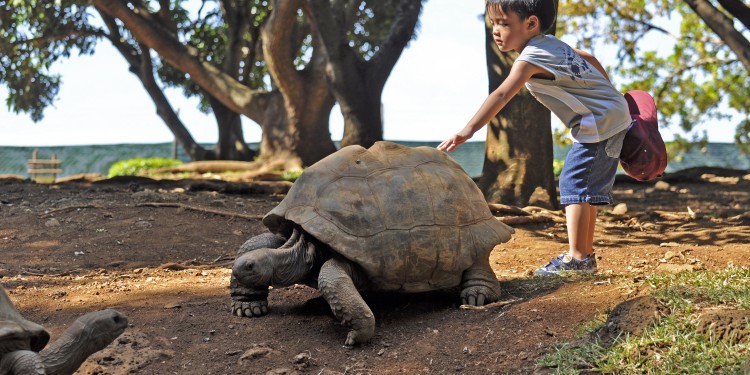MAURITIUS, AN AFFORDABLE PARADISE
It is that time of the year in Denmark – when you start dreaming of azure waters, pristine sandy beaches and stunning landscapes. Surprisingly if you want to travel on a budget, Mauritius is the perfect destination.
By Adriana Alcina Pictures: Dimitris Xygalatas
The article continues below.
Most tourist brochures about Mauritius start by citing Mark Twain’s famous quote claiming that heaven was modelled on Mauritius. While there are admittedly abundant beautiful resort-like islands all around the world, Mauritius is an idyllic paradise.
Despite its tiny dimensions (about 21 times smaller than Denmark), this small island-nation is full of amazing sights and natural attractions, wrapped up in a handful of landscapes, from sugar-cane plantations to river canyons, extinct volcanoes and lush forests.
Although Mauritius is famous for its upmarket and indulgent luxury resorts, there is certainly no need to spend a fortune to visit it. In fact, with the exception of airfare, Mauritius is a very inexpensive destination.
The article continues below.
Spectacular beaches
Located in the Indian Ocean, about 800 km from Madagascar, Mauritius’ long coastline is surrounded by coral reefs, protecting it from tsunamis and creating its glorious white sandy beaches.
While the luxury resorts often promise their guests exclusive access to the best beaches, the truth is that all Mauritian beaches are public and free.
Sun worshippers will find plenty of quiet beautiful beaches with different types of vegetation, from whistling pines and beach oaks to postcard-like palm trees.
Some of the most popular and superb beaches are Troux aux Biches, Mont Choisy and Péreybère in the North; Belle Mare in the East, Flic en Flac and Tamarin on the West Coast, and Blue Bay in the South.
The article continues below.
Not-to-be-missed places
Besides its famous sandy beaches, Mauritius offers travellers a wide range of attractions and activities, with many of them, free of charge. A good place to start is the popular SSR Botanical Gardens at Pamplemousses, home to curious flora species such as giant water lilies and an impressive collection of palm trees.
If you are interested in exploring nature, take a trip to Chamarel, where you can visit the seven-coloured earth (a geological curiosity arising from eroded, volcanic ash) and the magnificent waterfalls.
To get a sense of Mauritian history, visit the UNESCO-heritage site Le Morne, a historical rock from which, so the legend says, escaped slaves leapt to their deaths to avoid recapture.
To explore the wildest and least developed part of Mauritius, head to the southern regions of Britannia and Savanne, which feature beautiful landscapes, tea plantations and quaint traditional fishing villages. Another interesting spot is the historical coastal town of Mahebourg, located next to the airport.
The article continues below.
Mauritius has several small islands worth a visit, such as Ile Aux Aigrettes, home to the Mauritius Wildlife Fund that protects endangered species, like the pink pigeon and Aldabra giant tortoises. You will need to book in advance to arrange a visit.
Other highly recommended excursions are swimming with dolphins at Ile Aux Benitiers, and sailing to the private island of Ile Aux Cerfs.
A fun place to visit is the bustling and chaotic Mauritian capital, Port Louis. Here, French colonial architecture is mixed with modern skyscrapers and westernised shopping centres. There are various interesting sights, such as the Natural History Museum and the UNESCO Immigration Depot Aapravasi Ghat.
The city’s pulsing Central Market is the place to go for souvenir shopping (be prepared to bargain).
If you have time, visit the Champs de Mars, one of the oldest horse-racing tracks in the world. For the best nightlife, go to Grand Baie, Mauritius’ main tourist spot.
The article continues below.
A melting pot
Mauritius is a mosaic of cultural, linguistic and religious traditions. About two thirds of the population are of Indian origin and over one quarter are Creoles with African roots.
Three percent are Sino-Mauritians and two percent Franco-Mauritians. English is the de facto language, but French dominates the media and is taught along with English at school.
All Mauritians speak Creole, a mixture of French and various African languages, and most also speak other languages such as Hindi and Tamil depending on their ethnicity.
Hinduism is the dominant religion, but approximately 26 percent of the population are Catholic and 17 percent are Muslims.
The article continues below.
Nature and sports
Mauritius is full of iconic mountains, of which many are extinct volcanoes, perfect for hiking. A good place to explore the island’s lush forests is The Black River Gorges National Park.
Apart from trekking on your own, many other activities can be arranged by local travel agents, from mountain climbing, kayaking and cycling, to biking and horse riding.
For more information, check www.yemayaadventures.com or www.mauritiushorsetrails.com. Not surprisingly, water sports are extremely popular, particularly scuba diving and deep-sea fishing, with prices being very reasonable.
The article continues below.
Accommodation and transportation options
Private holiday apartments and guesthouses are cheap and plentiful, especially if you stay away from the more touristy locations, with apartments costing about DKK 2,000 per week. Villa Gerbera in the popular Flic en Flac and La Tonnelle in Trou Aux Biches, offer a convenient location and high-quality at competitive rates.
Renting a car is undoubtedly the best way to explore the island.
The many local rental car firms are both very economical and reliable, such as GBC car rental. As Mauritius was once a British colony, driving is on the left hand side.
Roads are generally in good condition, but local drivers can be pretty reckless. So, if you would rather not drive, you can rely on the efficient (although slow) public busses, which will take you to virtually every corner of the island.
For routes and schedules, check www.mauritius-buses.com. You can also use one of the many tour companies in Mauritius, such as White Sands Tours (www.whitesandstours.com) or Mauritours (www.mauritours.net). Taxis are relatively expensive, so if you take one, make sure you negotiate the price in advance.
The article continues below.
Cuisine and shopping
Mauritian cuisine reflects the island’s rich diversity, with a blend of Creole, Indian, Chinese and French culinary traditions.
Indian curries, fried rice, meat (mostly chicken) and delicious seafood are all largely popular, and spices such as cinnamon, clove, turmeric and cardamom are widely used. Street food is delicious and inexpensive.
You can get a dish of noodles, fried rice, gateaux piment (chilli fried split pea cakes) or a dholl puri (a flatbread spread with split peas, pickles, cooked vegetables and chutneys) for about DKK 15.
Mauritians also have a sweet tooth, so desserts, inspired by French cakes and pastries, are very popular. The local rum produced from sugar cane and the local beers (Blue Marlin and Phoenix), are the most common drinks.
A good and inexpensive option is Domaine Anna, a Chinese restaurant set in the midst of a sugar cane field, where guests can eat in individual gazebos set on artificial lakes surrounded by tropical gardens.
If you like seafood, try Le Barachois, a beautiful restaurant by the sea, and situated in the southwest of the island. For a special treat, book a table at the elegant, 19th-century colonial mansion, Le Château de Bel Ombre.
With regards to shopping, traditional souvenirs such as sugar and tea gift boxes, patterned knitwear and miniature boats are found in all major Mauritian towns, particularly in the local markets of Port Louis, Mahebourg and Curepipe and the Grand Bazaar at Grand Baie.
In addition, many boutiques and designer factory outlets sell Western-brand clothes at discounted prices.
The article continues below.
What to know
British Airways, Air France, Emirates and Condor fly from Copenhagen or Billund to Mauritius with a stopover.
All major Danish travel agents provide direct charter flights. Flight time from London is about 12 hours.
Mauritius’s only airport is located in the south end of the island and is 45 km away from the capital.
The local currency is the Mauritian Rupee (MUR). Approximately 54 rupees are equivalent to DKK 10.
There are no compulsory vaccines, and healthcare is public and free Electrical sockets are mostly British (three square prongs), but you may also find European ones (round two prong).
The local time is GMT +4, or three hours ahead of Denmark.
Interesting trivia about Mauritius
- Has been independent since 1968. Previously, it had been a Dutch, French, and eventually British colony.
- The flightless bird, Dodo, was once endemic to Mauritius, but human settlement quickly led to its demise. Today, it is Mauritius’s symbol and is considered an icon of extinction.
- The island’s population is 1.3 million, making it one of the world’s most densely populated countries.
- Mauritius has the second highest GDP in Africa after South Africa.
- Is home to various extreme rituals, such as fire-walking, sword-climbing and the body-piercing Tamil ritual of Thaimpussam Kavadi.






